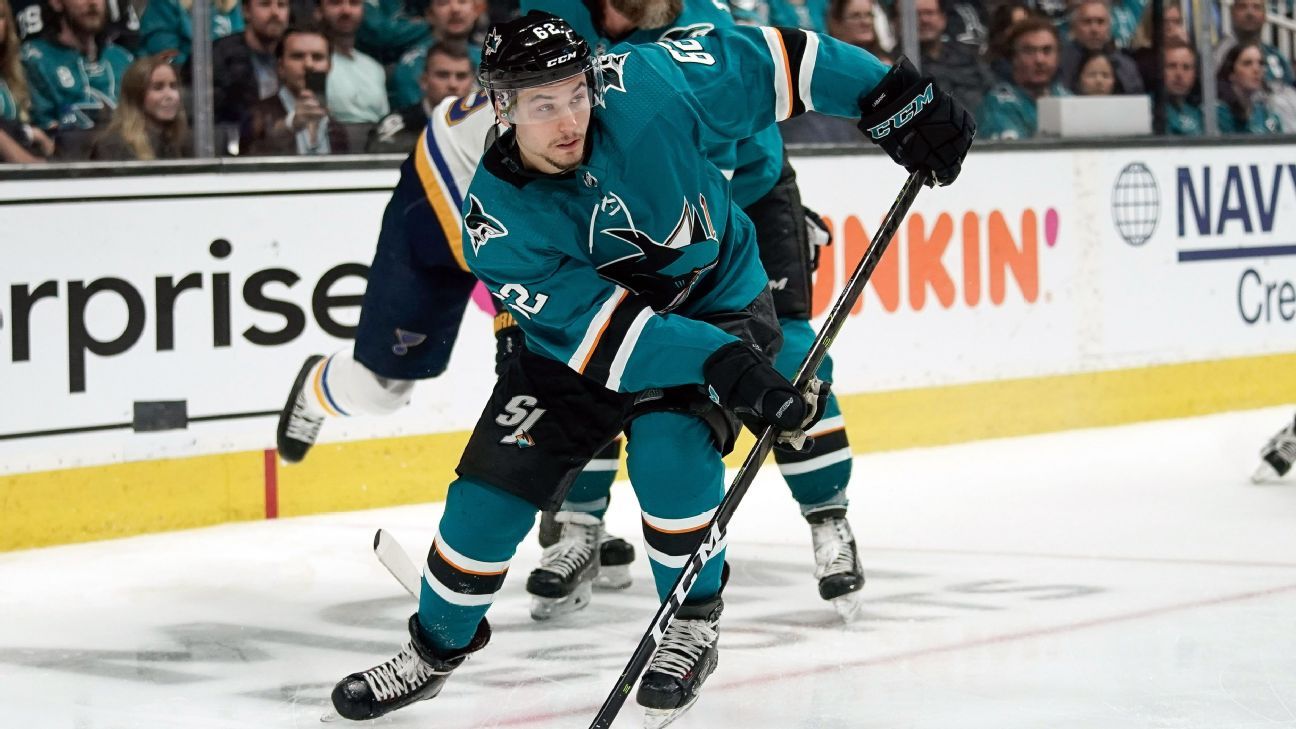The NHL free-agent feeding frenzy has been reduced to a few nibbles. Team executives have absconded to their cottages. Hockey insiders are firing up their blenders for frozen beverages rather than Twitter for breaking news.
So as hockey reaches its contemplative stretch of summer, what exactly have we learned from the last few weeks of the offseason? Here are 10 lessons, harsh or otherwise:
1. Offer sheets need both signatures
I shouted my defense of the Sebastian Aho offer sheet from the Montreal Canadiens until I was hoarse, and I will continue to do so. But I think we can all agree it was a relief to finally get a restricted free agent to sign one, after six years of mouth-foaming anticipation since the last one. But the harsh education on offer sheets this summer remains this salient point: The players have to sign them, too, as an indication that they want to leave their team — which the vast majority of RFAs do not.
I can’t really make this any clearer. Yes, it would make sense for Brayden Point to ink an offer sheet to get what he deserves as a premier young two-way forward. Or maybe he doesn’t want to risk leaving Tampa Bay and doesn’t want to break up the one of the best (regular-season) teams in NHL history so he can compete to win the Stanley Cup. On top of the inherent problems with offer sheets — from their winning percentage to the critical fallout befalling Marc Bergevin — a major reason we don’t see more of them is that players aren’t interested in signing them. That’s the NHL for you.
2. Stop contract shaming
If Aho is worth $8.454 million, Point might be worth even more. But he’s going to probably end up signing a team-friendly deal because he wants to remain friendly with the team, and potentially win a Stanley Cup with this group. And that’s OK!
There are going to be many who criticize him, or any player that chooses not to maximize their earning potential for the sake of staying with a contender and/or remaining where their stuff is. But choosing this route is every bit as laudable as someone like Mitch Marner refusing to allow his team’s other budgetary decisions to affect him. Which brings us to forward Kevin Labanc, who signed a one-year, $1-million contract to remain with the San Jose Sharks and was promptly labeled the dumbest player in hockey for doing so. “I think it was the best decision for myself and the team. The salary cap is tight, and sometimes you have to take a team discount. My biggest goal is to win a Stanley Cup this year. I had to take a bit of a discount, and I’m betting on myself to have an even bigger year,” he told NHL Network Radio.
Hey, it’s your career. You do you.
3. Doug Wilson is ‘Lord Business’
On a related note: the Sharks’ Doug Wilson somehow got Labanc back in on a $1-million contract. He convinced Erik Karlsson to sign on for eight years, although the $92 million obviously helps. And then he made yet another merciless decision with a beloved veteran player in letting Joe Pavelski walk away to the Dallas Stars, much he did with Patrick Marleau two years ago.
Half the GMs in this league would have rearranged life for Pavelski because his face is on the season tickets and because he literally bled for his team in the playoffs. But not Lord Business.
4. General managers are basically sports’ climate change deniers
They are not here for your rising ocean temperatures and glacial retreat and destructive weather patterns. That’s some future generation’s problem. No, they’re here for today. For the immediacy of Sergei Bobrovsky‘s $10 million AAV contract or Jeff Skinner‘s $9 million AAV deal, and not for what these contracts will look like in 2025, because there probably isn’t a 2025 with the Florida Panthers or Buffalo Sabres for Dale Tallon on Jason Botterill, respectively, if these deals don’t get done. Let the Sabres’ next general manager (and by that we mean third or fourth in that span) figure out how to get Skinner’s $9 million cap hit with a full no-move off the books if things get catastrophic.
5. A lot can change in two weeks
What if I told you that Kevin Hayes, a 27-year-old who has broken 20 goals once and 50 points once in his career, has the fifth-highest cap hit ($7,142,857) of any unrestricted free agent signee this summer, behind Artemi Panarin, Karlsson, Skinner and Matt Duchene? And that the contract runs seven years with full no-move protection for the first three seasons?
Luckily, the Philadelphia Flyers have never in their history overcompensated an unrestricted free agent that they didn’t regret in the first three seasons.
6. Artemi Panarin has disrespected the New York Islanders
According to the New York Post, Panarin said through an interpreter that he “dreamt of playing for the [New York] Rangers,” adding “my heart has been here. I’m really happy and lots of emotions. Just feeling a little overwhelmed the last two days, but I am really happy.”
And yet there he was, talking with the Islanders, given them hope that Long Island would swipe a second free-agent prize away from James Dolan. But no, he was just stringing them along, always dreaming of being a Ranger. Look, we’re not saying Islanders fans should go The Full Tavares the first time Panarin visits with the Rangers. But maybe warm up those “we don’t need you” vocal chords.
7. In the end, that Matt Duchene trade was pretty messed up
In summary of the Nov. 2017 three-team Duchene trade:
-
Colorado ended up with defensemen Bowen Byram and Danila Zhuravlyov, center Matthew Stienburg, forwards Shane Bowers and Vladislav Kamenev, and goalie Justus Annunen.
-
Ottawa ended up with forwards Vitaly Abramov and Jonathan Davidsson, and defenseman Lassi Thomson, after flipping Duchene to Columbus.
-
Nashville ended up with Kyle Turris and … Duchene.
As ever, Ottawa remains “a team.”
1:32
Mike Johnson and Craig Button break down Matt Duchene’s 7-year deal with the Predators.
8. The PTO market once again grows
The cap system has successfully squeezed a portion of the veteran unrestricted free agent class, so the “professional tryout contract” route will once again get crowded this September. For a preview, here are the current UFAs who are age 34 and older. (Hey there, Dan Girardi.)
As Don Fehr of the NHLPA told the Canadian Press: “If indeed you have a situation in which the current system disadvantages veteran players, then obviously that’s something the players are going to want to look at to see if there are changes that could be made, which would either remedy that or make the effect less significant.” He said that in 2017.
9. Owners write the blueprints
I feel for Paul Fenton. I found him to be an insightful, shrewd executive with the Nashville Predators. He finally gets his shot with the Minnesota Wild, and it’s like he can do no right, from the Victor Rask trade (which was terrible) to the Mats Zuccarello signing (which was terrible within the context of the team). But in the end, he’s serving at the pleasure of his owner.
Wild owner Craig Leipold said in March: “We plan to make some noise this summer. Just so we all understand, this is not a rebuild. Look at our team: we are ready to play right now. We are building on the fly, and that’s kind of our mantra right now.”
One wonders what Fenton, if left to craft his own path, would be doing this summer instead of handing out five-year deals with trade protection to 31-year-old forwards…
10. It’s the patience, stupid
The Colorado Avalanche and New Jersey Devils both had solid summers so far, and in both cases, patience was their virtue. The Devils kept their cap space open for a few seasons despite needing several upgrades in their lineup to contend. They were the only team in the P.K. Subban derby that could afford the full freight of his contract when the Norris Trophy winner became available. And the Avalanche had fielded Tyson Barrie offers for years, but never shipped out their puck-moving defenseman — until this summer, when their young D-core was built out and Nazem Kadri became available to solve several of their problems.
The week in Gritty
It’s the summer for mascots, too, as our orange nightmare-fuel friend traveled over state lines to the Jersey Shore.
Trying to get that vitamin sea 🧜♀️ pic.twitter.com/TtQMg9dEwR
— Gritty (@GrittyNHL) July 10, 2019
Notice we didn’t say he crossed “enemy lines,” as South Jersey is very much Flyers Country. Just don’t tell that to, you know, the mascot up the Turnpike, who gleefully chimed in on Gritty’s whereabouts.
I’d want to get out of Philly too https://t.co/uqEsXGDrPy
— NJ Devil (@NJDevil00) July 10, 2019
Settle this with a Skee-Ball battle, our plush friends.
Jersey fouls
From reader Michael Jugan:
@wyshynski Seen at the HHOF #jerseyfoul ? pic.twitter.com/Jm0YlNCugO
— Michael Jugan (@HocEman) June 12, 2019
I’m actually … into this? There’s always been something hipster about transforming other sports uniforms with hockey iconography, and especially gear that could be worn in the summer months when sweaters aren’t exactly a paragon of functionality. Like, for example, NHL-centric soccer jerseys, which have been mocked up on several occasions through the years. So not a foul. Not something I’d wear. But not a foul.
Five hockey sitcom episodes that aren’t Seinfeld‘s “The Face Painter”
Thirty years ago, Seinfeld (then The Seinfeld Chronicles) premiered, and a landmark show about “nothing” that spawned several thousand catchphrases and countless other sitcoms centered around standup comics that were, well, not Seinfeld. (Mulaney, we hardly knew ye.)
Some time later — May 11, 1995, to be exact — Seinfeld gave us “The Face Painter,” the episode in which Devils fan David Puddy painted his face (and chest) to support the team, while scaring the life out of a priest.
This might be the most famous hockey-centric sitcom episode of all time, but it’s not the only one. Here are five other non-Puddy sitcom hockey episodes:
1. “Lisa On Ice”
Outside of “The Face Painter,” it’s perhaps the most famous hockey sitcom episode. The Simpson’s writer Mike Scully, the only hockey fan in the writers’ room, pitched the sport as an option after they had already parodied baseball and football. Initially, he wanted to include cameos by Bobby Orr and Phil Esposito, but the rewrite process tried to make the episode as non-“inside hockey” as possible.
2. “Mac’s Big Break”
The knuckleheads from It’s Always Sunny In Philadelphia take on the joys of intermission shoot-the-puck contests, as Mac trains to win a prize at a Flyers game and instead wins a place on the SportsCenter blooper reel.
3. “The Platinum Rule”
Being the resident Canadian on How I Met Your Mother, Robin Scherbatsky invites hockey references. While dating a sportscaster named Curt ‘Ironman’ Irons, she attends a Vancouver Canucks game against the Rangers and tells the gang she had the honor meeting Mason Raymond. Cue Barney: “What’s the opposite of name-dropping?”
4. “Stanley’s Cup”
A sendup of “The Mighty Ducks” with the backdrop of the Avalanche/Red Wings feud. And then things get dark at the end, even by South Park standards.
5. “Never Love a Goalie” (Parts 1 and 2)
The debut of Boston Bruins‘ netminder Eddie Lebec on Cheers, and a glorious look into the idiosyncrasies of goaltenders and the people who love them.
Listen to ESPN ON ICE
Listen to every ESPN ON ICE podcast from the last season right here, including our finale with free-agent grades and an Auston Matthews interview.
Puck headlines
Ryan O’Reilly removing his tooth on stage before giving a speech at the ESPYs is the greatest thing I’ve ever seen pic.twitter.com/kCunzYLoB5
— Josh Hyman 🏆 (@joshhymanNHL) July 11, 2019

